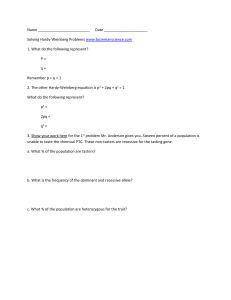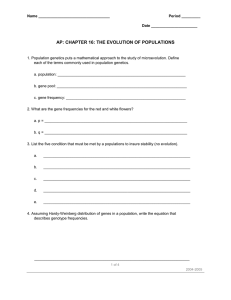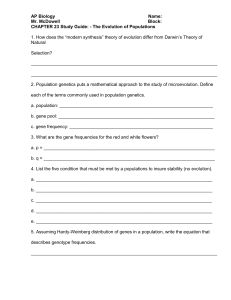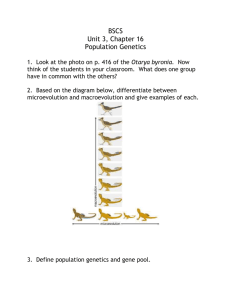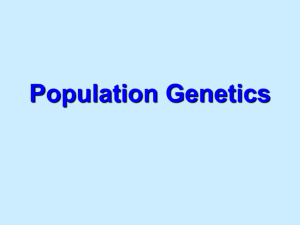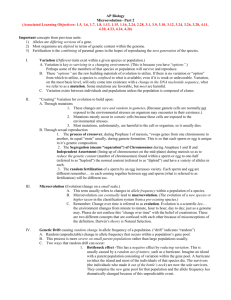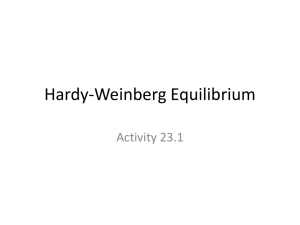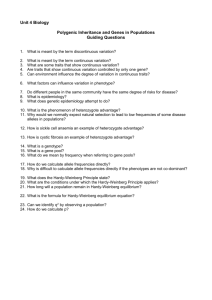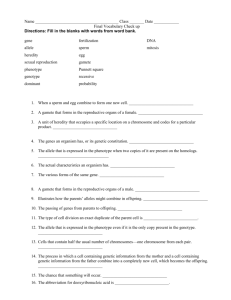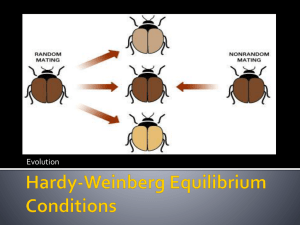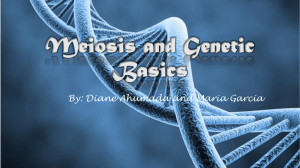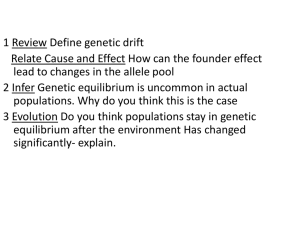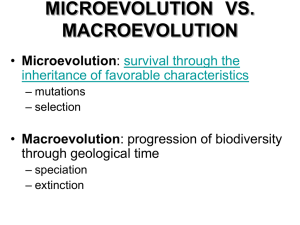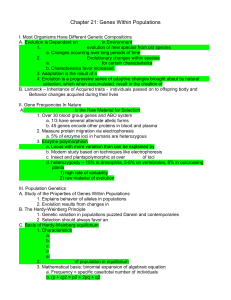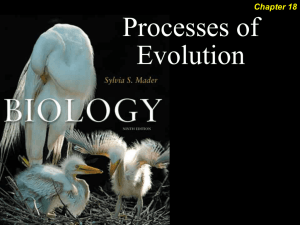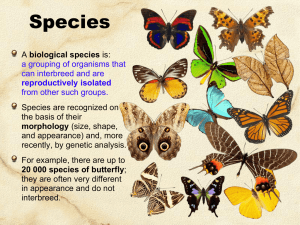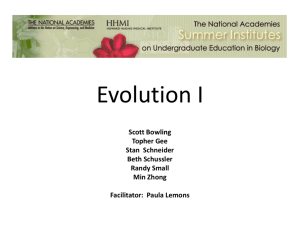Chapter 23 Notes: Population Genetics
advertisement
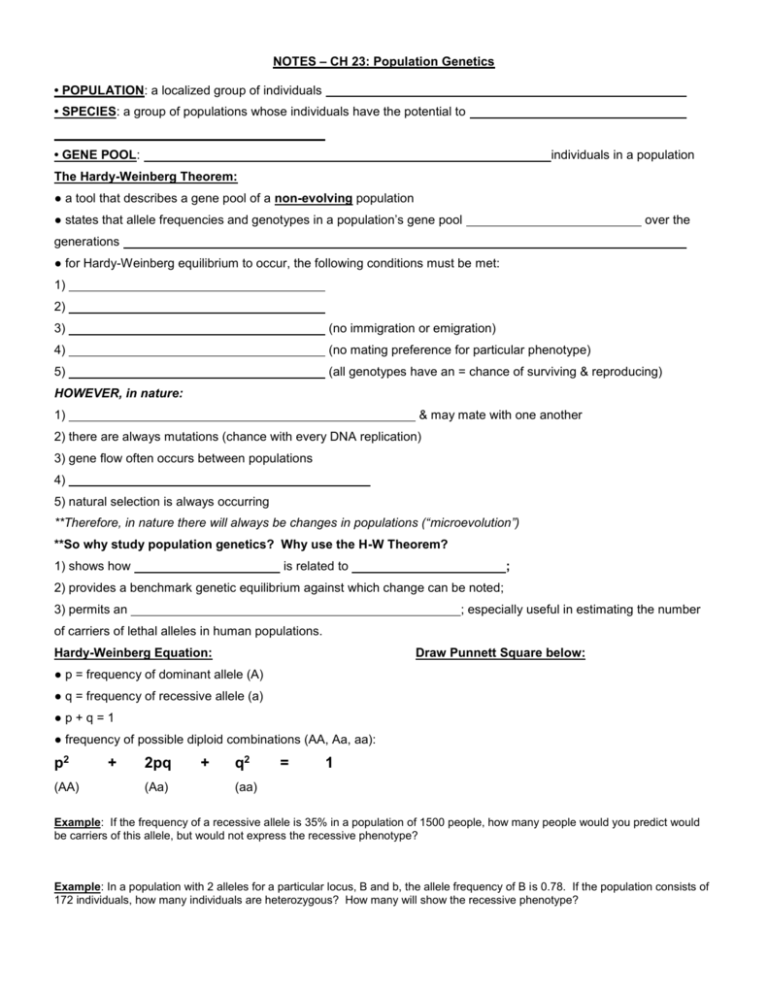
NOTES – CH 23: Population Genetics • POPULATION: a localized group of individuals • SPECIES: a group of populations whose individuals have the potential to • GENE POOL: individuals in a population The Hardy-Weinberg Theorem: ● a tool that describes a gene pool of a non-evolving population ● states that allele frequencies and genotypes in a population’s gene pool over the generations ● for Hardy-Weinberg equilibrium to occur, the following conditions must be met: 1) 2) 3) (no immigration or emigration) 4) (no mating preference for particular phenotype) 5) (all genotypes have an = chance of surviving & reproducing) HOWEVER, in nature: 1) & may mate with one another 2) there are always mutations (chance with every DNA replication) 3) gene flow often occurs between populations 4) 5) natural selection is always occurring **Therefore, in nature there will always be changes in populations (“microevolution”) **So why study population genetics? Why use the H-W Theorem? 1) shows how is related to ; 2) provides a benchmark genetic equilibrium against which change can be noted; 3) permits an ; especially useful in estimating the number of carriers of lethal alleles in human populations. Hardy-Weinberg Equation: Draw Punnett Square below: ● p = frequency of dominant allele (A) ● q = frequency of recessive allele (a) ●p+q=1 ● frequency of possible diploid combinations (AA, Aa, aa): p2 (AA) + 2pq (Aa) + q2 = 1 (aa) Example: If the frequency of a recessive allele is 35% in a population of 1500 people, how many people would you predict would be carriers of this allele, but would not express the recessive phenotype? Example: In a population with 2 alleles for a particular locus, B and b, the allele frequency of B is 0.78. If the population consists of 172 individuals, how many individuals are heterozygous? How many will show the recessive phenotype? DEFINITIONS: Microevolution = studies how pop’s of organisms change from generation to generation; Macroevolution = studies changes in groups of related species over long periods of geologic time; determines Causes of Microevolution: 1) Natural Selection 2) Genetic Drift (changes in the gene pool of a small population ) Examples: -Bottleneck Effect: results from -Founder Effect: few individuals in a population 3) Gene Flow ( between populations) 4) Mutation (introduces into a population) 5) Nonrandom Mating (individuals based upon their traits) Ways Natural Selection Acts on a Population: 1) Stabilizing Selection: eliminates individuals with ; existing population frequencies of common traits are maintained Example of Stabilizing Selection in humans: *human babies most commonly weigh 3-4 kg; babies much smaller or larger have higher infant mortality rates. 2) Directional Selection: of a range of traits; common during periods of environmental change Examples: - - Peppered Moth example: 100 years after the first dark moth was discovered in 1848, ; the light variety continued to dominate in unpolluted areas outside of London. 3) Diversifying (a.k.a. Disruptive) Selection: occurs when environment while selecting against common traits 4) Sexual Selection: differential mating of males in a population; -females tend to increase their fitness by increasing the quality of their offspring by choosing superior male mates (and are therefore “choosier” or more selective when finding a mate) -males increase their fitness by maximizing the quantity of offspring produced **as a result, in vertebrate species, the male is typically the “showier” sex - - - ● INTRASEXUAL SELECTION = direct competition among individuals of one sex ( , etc.) ● INTERSEXUAL SELECTION = “ ”; individuals of one sex are choosy (usually the females)
